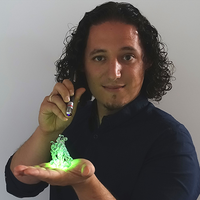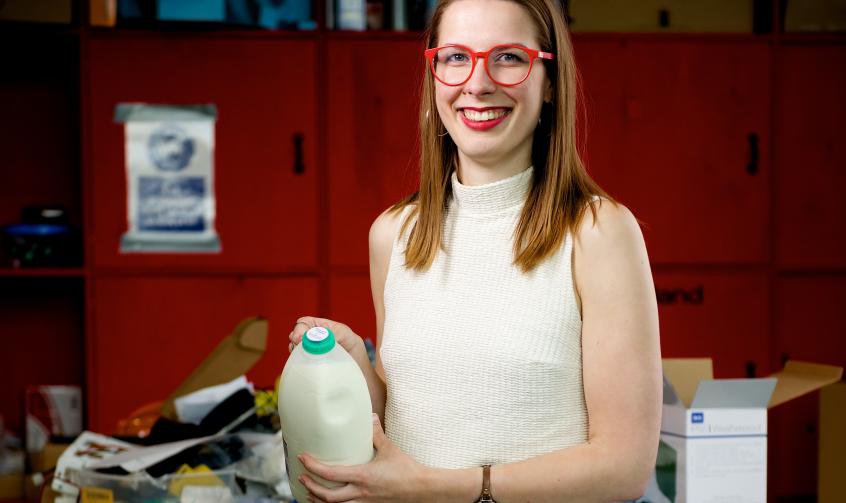Approximately one third of the food products produced for mass consumption worldwide (1.3 billion tons) is thrown away or goes bad without being consumed, according to data from the Food and Agriculture Organization of the United Nation (FAO). In the United States, almost 90% of consumers throw away food that is still edible; in the United Kingdom, this figure drops to 60%. The expiry date printed on food labels discourages consumers from buying products, and this has a direct, economic impact on producers, who end up throwing away 16% of their stock before it has actually gone bad. With the aim of reducing the amount of edible food products that end up in the garbage, Solviega Pakštaitė has developed Mimica Touch, a highly precise expiry label which earned this young designer a spot among MIT Technology Review, Spanish edition´s 35 Innovators Under 35 Europe 2017.
While studying Industrial Design in London (United Kingdom), Solviega, who is the CEO and founder of Mimica, researched the problems faced by the blind and visually impaired while using public transport. She asked members of this target group about their day-to-day experiences and visited their homes, and discovered that these users have devices for all kinds of things, including identifying the color of the clothes they plan to wear. However, when she asked how they knew whether a food product had expired or gone bad she discovered they had no way of knowing.
But instead of simply communicating the exact expiry date of food products to the visually impaired, Solviega took the opposite task: she concentrated first on the type of interactions which users would have with the label. "I imagined my plastic packaging like a banana peel with bumps and lumps, which would represent an obvious signal that the food product is no longer apt for human consumption," she recalls. After, she contacted scientists to explore how she might develop this tactile label.
A chemist suggested she use gelatin, which decomposes at the same time as meat products and adopts a liquid state when it ceases to be fit for consumption. With this material in mind, Solviega designed a multilayer label, comprised of a layer of plastic followed by a layer of gelatin, another layer of plastic with protuberances and a final, smooth layer of plastic. While the label remains smooth to the touch, the food product within is still good, and when bumps become detectable this indicates that the food product has gone bad. Gelatin mimics the food contained within the package, hence the product´s name: Mimica.
Mimica Touch is simpler and cheaper than other solutions currently under development aimed at managing the freshness of food products through chemical pigments or electronic chips, and this makes it possible to apply Mimica to each package instead of batches. This label has also been designed to be used in conjunction with packaging machines already used by producers. Among her motivations, Solveiga highlights: "Right now, being sustainable means making a conscious effort. I want to turn that on its head by turnin sustainable behaviors into the simplest option."
The vice president of Innovation at Grupo NAOS and jury member for Innovators Under 35 Europe 2017, Cécile Tharaud, describes Mimic Touch as a daring, simple and revolutionary proposal with great social and environmental impact. In her opinion, Solveiga represents "a true entrepreneur, who looks for partners in different realms" in order to develop her product.
By Lourdes Collado
Translation: Teresa Woods




